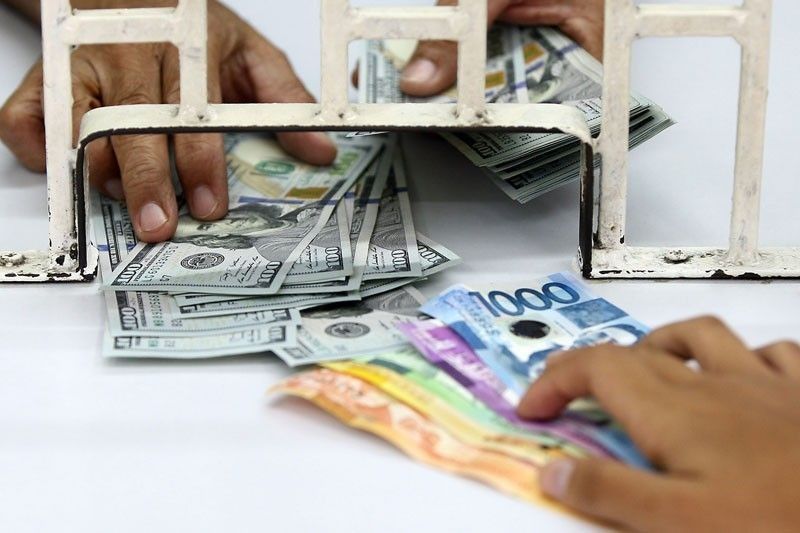Christmas dollar inflows begin to perk up an already strong peso

MANILA, Philippines — A seasonal uptick in dollar inflows ahead of Christmas pushed the peso to a fresh high in over 4 years on Wednesday, sustaining strength that largely emanates from tepid demand for dollars coming in tandem with a sluggish economy.
The local currency closed at P48.13 against the US dollar, stronger than its previous finish of P48.145. This was the peso’s strongest performance since it closed at P48.10 per dollar on Oct. 20, 2016, data showed.
The peso opened the trading day at P48.11 versus the greenback, with its best showing at P48.09 per dollar. Sought for comment, Michael Ricafort, chief economist at Rizal Commercial Banking Corp., said the rally was expected.
"The seasonal increase in OFW (overseas Filipino workers) remittances and conversion to pesos for the Christmas season is fast approaching in a few days," Ricafort said in a text message.
Cid Terosa, senior economist at University of Asia & the Pacific School of Economics, agreed. "The steady reopening of the local economy, government efforts to pump prime the economy, and the onset of seasonal spending have buoyed expectations that domestic markets will become more vibrant," Terosa said in a separate text message.
The final quarter of the year is usually greeted by strong dollar inflows from migrant Filipinos sending money to families for the holidays. These dollars are then exchanged for pesos which in turn provides support to the local currency.
The dollar inflows make their way to the country's gross international reserves, which hit a new record-high of $103 billion as of October as foreign loans for coronavirus programs pile up while demand for the greenback sinks due to falling imports.
Apart from remittances, much of the local unit's recent strength had been attributed to sagging imports, which have persistently declined since May last year and reduced demand for dollars as payments to shipments.
This, in turn, reflects a weakening economy whose demand for imported goods from raw materials for infrastructure to food slumped with consumers forced to stay home by coronavirus. Consumer demand accounts for over 70% of the economy.
For Terosa, the peso is still bound to appreciate in the near term, a situation that would put exporters and remittance earners at the losing end, while benefiting importers who would have to shell out fewer dollars to ship in foreign goods.
"Rising COVID-19 cases in many developed economies has incentivized the outflow of investments to many developing and emerging markets," he said.
- Latest
- Trending






























